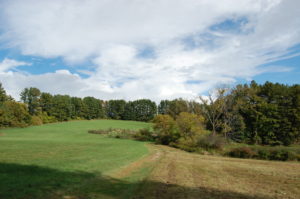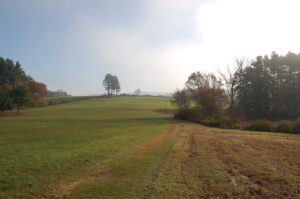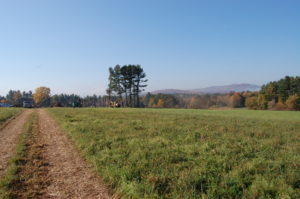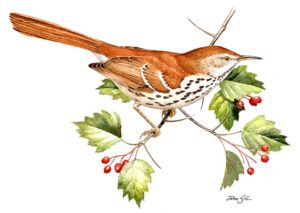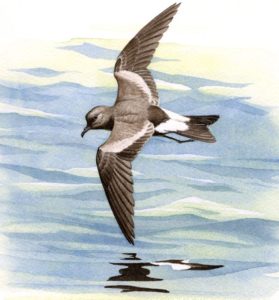People have been observing and counting birds at Mass Audubon sanctuaries for as long as these properties have existed. In order to provide a focus for these observations and to insure that data are collected in a similar fashion, Mass Audubon initiated a program of breeding bird surveys on our sanctuaries in 2004 and has been carrying out these surveys ever since. We use standard point count methodology where observers stand in the middle of a 50 meter (forests) or 100 meter (salt marsh, grasslands) radius circle for 10 minutes three times in June and record all the birds they see or hear. The goal of the program is to track the birds that occur on our sanctuaries during the breeding season, determine the habitat characteristics that support different species of birds, evaluate the impact of any ecological management, and examine long term trends, such as those that might be caused by climate change. Since 2004 staff and volunteers have logged over 30,000 records of birds in 315 counting circles on 48 sanctuaries. We typically carry out surveys at each sanctuary for three years every ten years, but at a number of sanctuaries, enthusiastic staff and volunteers have made observations every year.
We have recorded 149 species of birds during these breeding bird surveys of which 25 are considered conservation priorities. Sanctuaries harboring the most of these high priority conservation species are Allens Pond, Wellfleet Bay, and Ipswich River. Not surprisingly, sanctuaries in central and western Massachusetts, such as Pleasant Valley, Wachusett Meadow, and Rutland Brook and are notable for the number of wood warblers and other species associated with forest interiors that have been recorded in these sanctuaries. Vegetation data we have collected on our counting circles have shown that many of these wood warblers species have an affinity for forests containing a high percentage of evergreens.
The breeding bird surveys will enable us to track changes in a number of birds that are conservation priorities. Salt marsh sparrows are considered vulnerable to the effects of sea level rise associated with climate change. After ten years of monitoring, the numbers of

Saltmarsh Sparrow by John Sill
saltmarsh sparrows seems to be holding its own at Allen’s Pond and Rough Meadows wildlife sanctuaries. Data from other surveys carried out over a longer time period indicate a steady decline region-wide, so it is important for us to continue these surveys on our sanctuaries. We are also tracking the responses of bobolinks to ecological management measures that create improved grassland habitats at Daniel Webster and Drumlin Farm. Neotropical migrants whose numbers are declining nationally, such as wood thrushes are also priorities for our monitoring. As permanently protected lands, the sanctuaries at Mass Audubon enable us to evaluate changes in the populations of these and other birds over long periods of time and allow us to take actions that will serve to maintain and enhance their populations in the future.


